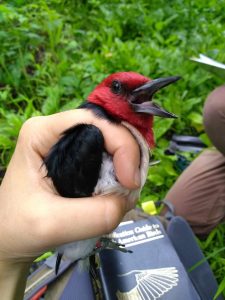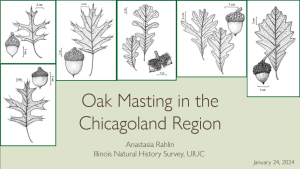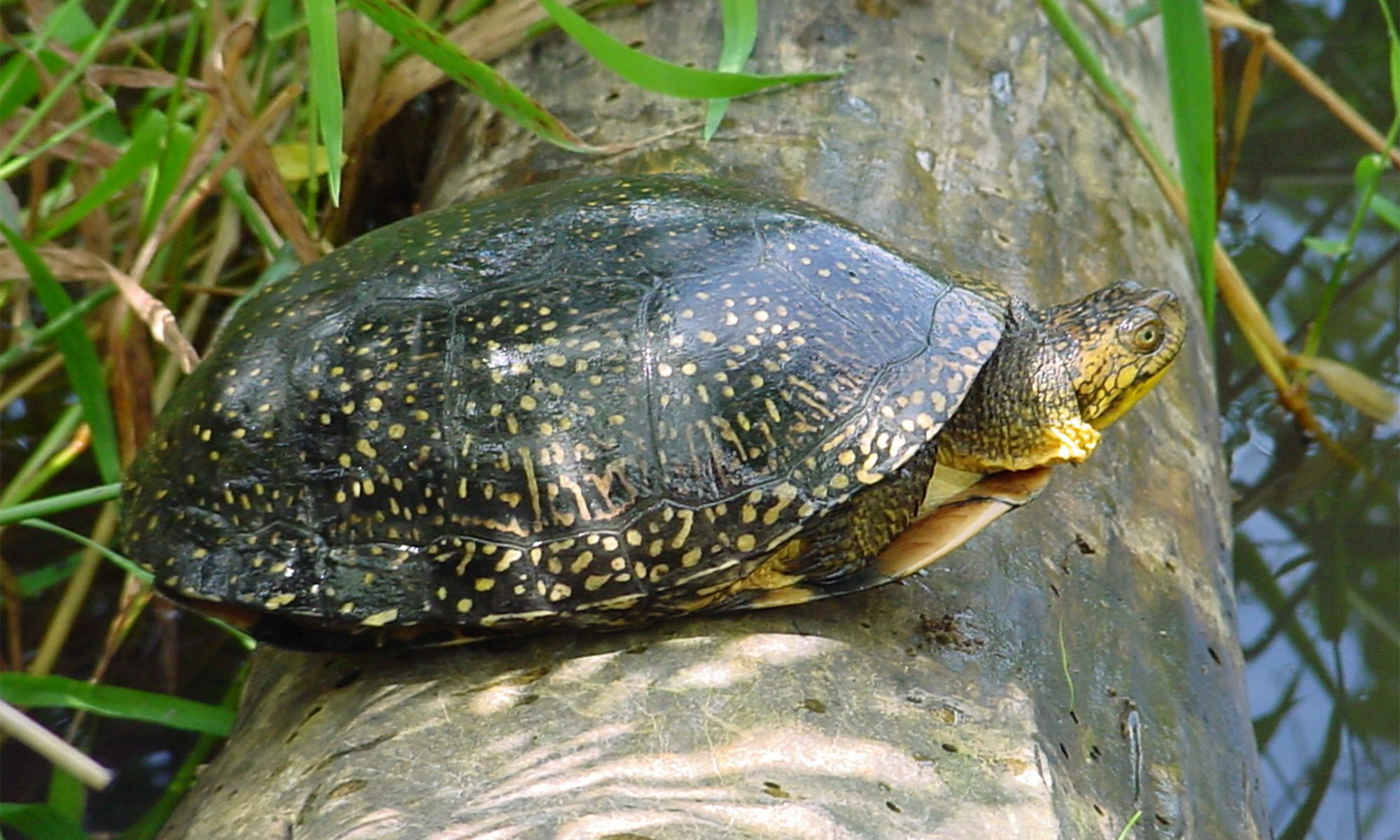 Red-headed Woodpeckers, an SGCN, are declining in the northern portion of their range, but much remains unknown about their ecology. Like all woodpeckers, they are cavity-nesters and likely face intense competition for available habitat during the breeding season. Although characterized as a savannah species, comparisons of nesting attempts by Red-headed Woodpeckers between open savannah and closed-canopy forests have been rarely investigated. Red-headed Woodpeckers cache acorns, but the influence of acorn mast seeding has also been poorly studied.
Red-headed Woodpeckers, an SGCN, are declining in the northern portion of their range, but much remains unknown about their ecology. Like all woodpeckers, they are cavity-nesters and likely face intense competition for available habitat during the breeding season. Although characterized as a savannah species, comparisons of nesting attempts by Red-headed Woodpeckers between open savannah and closed-canopy forests have been rarely investigated. Red-headed Woodpeckers cache acorns, but the influence of acorn mast seeding has also been poorly studied.
Previous research has compared Red-headed Woodpecker population changes to population changes in invasive European Starlings (cavity competitor) and Red-bellied Woodpeckers (cavity and acorn competitors) but did not consider potential impacts of Northern Flickers and Eastern Bluebirds (potential cavity competitors), or Blue Jays (potential acorn competitors). Finally, age structure in breeding success has mostly been ignored.
In the spring and summer of 2017, 2018, and 2019, we found Red-headed Woodpeckers breeding in closed-canopy forests and oak savannah patches in northern Illinois. We noted Red-headed Woodpeckers, Red-bellied Woodpeckers, and Northern Flickers responded aggressively to Red-headed Woodpecker call playbacks at some sites, but at others, woodpeckers ignored playbacks. Since aggressive responses in birds have been linked to both increases and decreases in breeding success, we were interested in quantifying aggressive responses between Red-headed Woodpeckers
and possible competitors and seeing if responses vary between closed and open-canopy forests. Since woodpeckers can be aged up to 4+ years by the molt limits identified in feather tracts, we are also interested in determining whether woodpecker age influences competition strength. In 2018 and 2019, we collected nest success data from Red-headed Woodpecker pairs breeding in Cook and Lake counties.
We captured 6 adults and created a new canopy mist-net rig to increase capture successes (Rahlin et al., 2019). This system will enable us to survey for these SGCN more effectively. Finally, we have been conducting an annual acorn count across forest preserves in northern Illinois since 2018 to determine if breeding success increases during or following high mast years.
 In 2024, Rahlin presented the oak masting data as part of the Cook County Forest Preserve District’s Environmental Education program.
In 2024, Rahlin presented the oak masting data as part of the Cook County Forest Preserve District’s Environmental Education program.
Publications
Rahlin, A., A. Világ, and D. Hurd. 2019. Flexible canopy netting rig and audio lure placement for woodpecker capture. North American Bird Bander 44(2–3):160–166.
